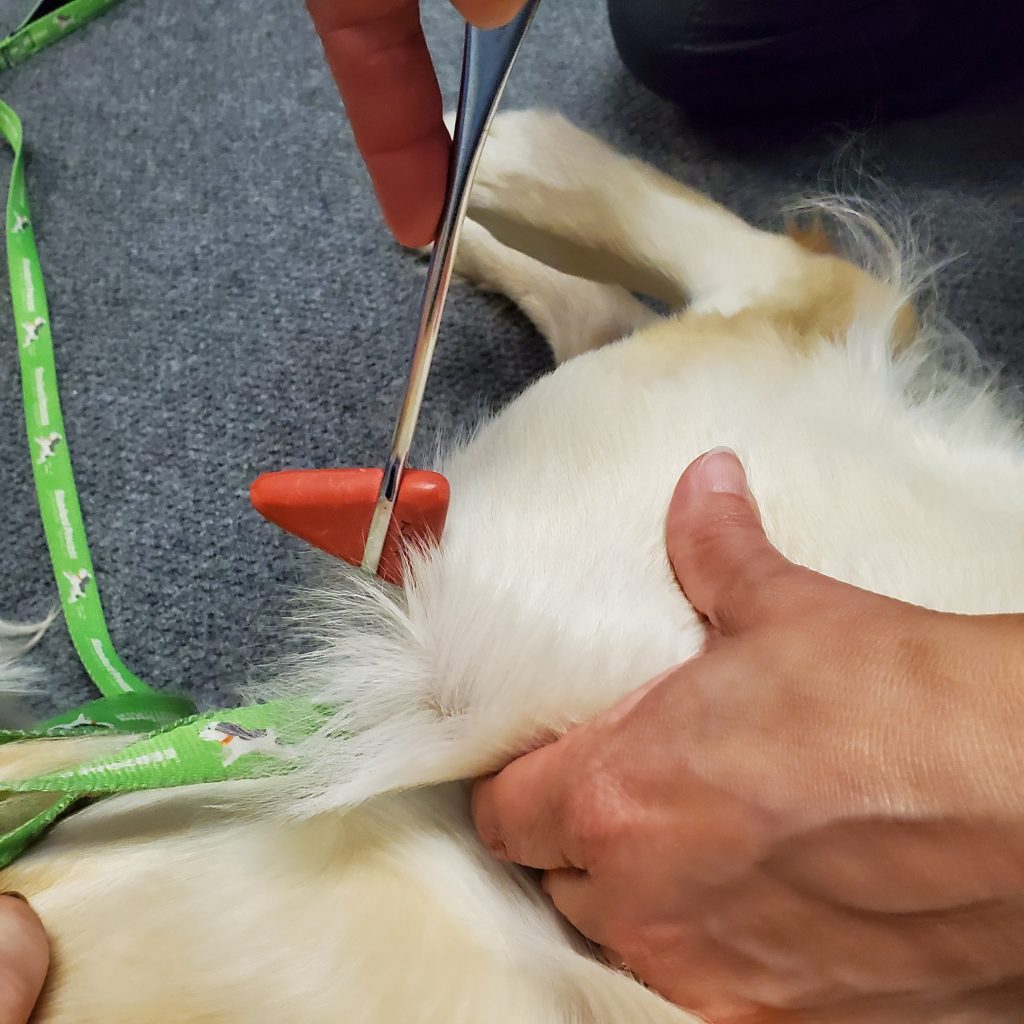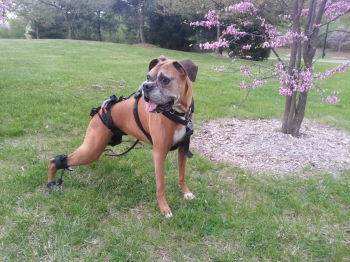Initial Evaluations -Neurologic
by Angelia Oliverei LVT, CVMRT and Cathryn Adolph, LVT, CCRP

In the second installment in our Initial Examination Blog series, we look at the neurologic portion of our evaluation. Much like our orthopedic exam, we start by looking at your pet’s posture, gait, and muscles, but from a completely different perspective. We also evaluate your pet’s reflexes, nerve reactions and check for appropriate responses to different stimuli.
Neurology
Neurology is the branch of medicine involving disorders of the nervous system and includes the diagnosis and treatment of such conditions. The nervous system is responsible for controlling every function in the body from voluntary movement, breathing, digestion, hormone release, pain recognition, and more. In fact, everything is neurology!!
There are two major branches of the nervous system that work to send signals throughout the body. The first is the central nervous system, which includes the brain and spinal cord. The second is the peripheral nervous system, which includes all of the nerves that branch out from the brain and spinal cord and extend to other parts of the body including muscles and organs.
Posture & Gait
Similar to our orthopedic exam, our neurologic exam starts with a look at posture and gait. Some neurologic conditions can weaken the signal from the brain to the muscles, which can be reflected in our pet’s movements. Abnormalities in our pet’s gaits can be seen as:
- Ataxia – Uncoordinated gait that is often described as “walking like they are drunk”
- Cadence – Animals have a rhythm when they walk, it is abnormal when the beat in the front does not match the beat in the rear
- Scuffing – The pet drags their nails, or even the top of their feet, on the ground as they advance their limbs, which can often be heard also
- Knuckling – This is when the pet places their foot upside down as they stand or walk, rather than positioning the paw pads down on the ground
- Other symptoms include: staggering, tripping, dragging, wobbly gait, crossing their feet beneath them, falling down, difficulty remaining standing, etc.

When standing, we can evaluate your pet’s posture. Sometimes we may see a pet sink down in the affected limbs as they tire from standing, shifting weight off a weak limb, or even knuckling.
Palpating & Testing Reflexes
During the physical examination, our veterinarian will palpate all the muscles of the back and limbs, looking for tense muscles and also loss of muscle tone. Muscles that are not receiving strong signals from the nervous system can become flaccid, described as a loss of muscle tone.
Reflexes are tested to ensure the nervous system is working correctly. These reflexes are involuntary and automatic, designed to protect the body from injury without having to think about it. In fact, the brain isn’t involved as the reflex arc goes from the peripheral nerves to the spinal cord and back. We test the reflexes on the front limbs, hind limbs, along the trunk, and the also the cranial nerves.
Diagnostic Tool
The neurologic exam is a wonderful diagnostic tool and can help us isolate, or narrow down, a cause for the patient’s symptoms. Advanced imaging, such as an MRI or CT scan, is sometimes needed for a definitive diagnosis. Getting a definitive diagnosis does not always change the treatment plan, but it can help guide the prognosis of certain patients.
